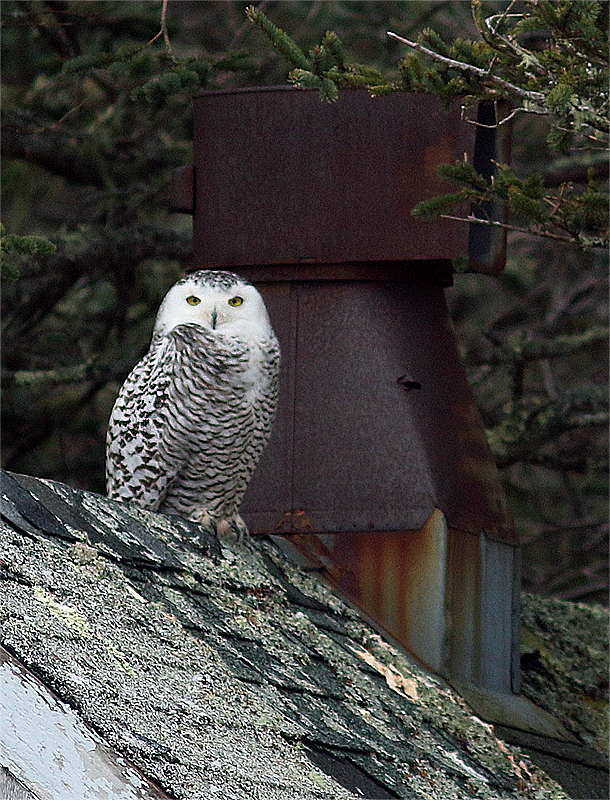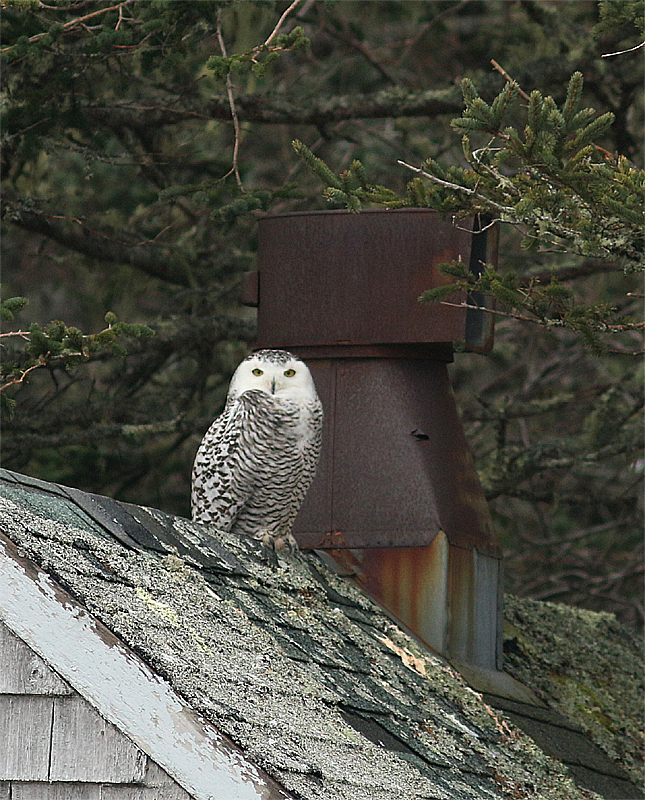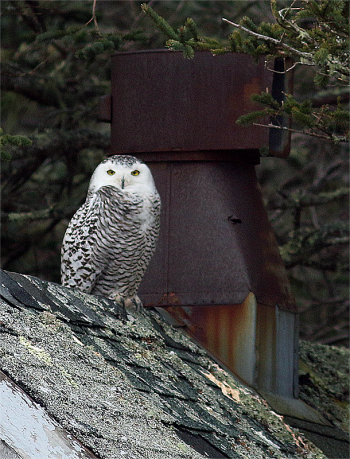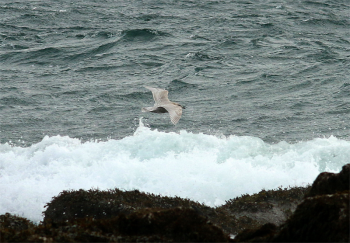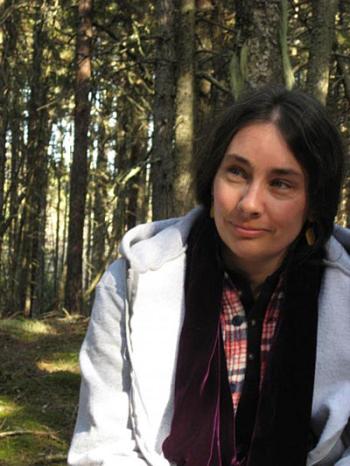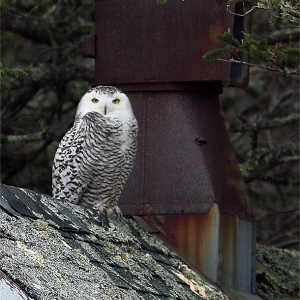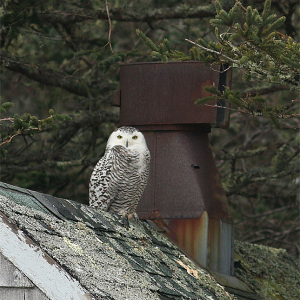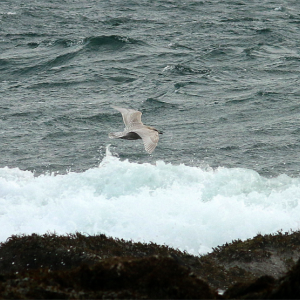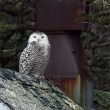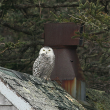Eva Murray: An accidental twitcher — birding on Matinicus Island
Birding “well out to sea” isn’t just about the puffins.
My mother-in-law always swore that she had once seen a mountain bluebird on Matinicus Island, back when she lived here in the 1970s and early 1980s. At the time, one of the Maine bird experts who sort of held court about such things scoffed at her claim, and by her telling, dismissed the sighting with some insufferable variant of “Oh, no, dear; that’s impossible, and you wouldn’t know anyway.”
A mountain bluebird is a western species, not the same as the usual rust-bellied eastern bluebird common to these parts; the male displays a lot more blue and is pretty distinguishable.
My husband and I never used to pay that much attention to the birds. Of course, it’s hard not to appreciate the pretty colored ones, the scarlet tanagers and Baltimore orioles and rose-breasted grosbeaks, when they come through — and they come through, stopping at places like Monhegan and Matinicus headed somewhere, bringing a few of the more determined among field-glass-wielding tourists in their wake. But we had a cat who could pull a songbird right out of the air. One bird-loving neighbor liked to employ her Super-soaker high-speed water bazooka as a means of rescue when our Teco was on the hunt. We didn’t see the need to invite mayhem.
Riley, the resident kitty these days, ignores the birds entirely (and likewise the mice) and the large bush outside our kitchen window seems to be a haven for everything that can fly which is smaller than a mallard duck. Several pairs of cardinals — once rare around here — have taken up year-round residence on our property and the males hurtle back and forth around here like a couple of firetrucks. We cannot help but pay attention to the birds. I’m afraid we’re getting hooked, and Paul especially. I noticed him in the yard a week or two back with a chickadee in his hand.
We’re late to this game, here on Matinicus, where it seems most of the neighbors have been feeding, studying, and recording the appearance of interesting birds forever. Up to now, my household has been more attentive to sea glass, stars, monarch butterflies, parts, fittings, wiring, and silly nitwits who probably should have gone to Martha’s Vineyard. Now, suddenly, I am madly jealous of our next-door-neighbor who gets the indigo bunting at her feeder.
This year for Christmas I ordered Dr. Jeff Wells’ book Maine’s Favorite Birds for Paul, and ended up in a little bit of online dialog with Jeff and his wife Allison (then — just by way of this being an extremely small world— with Jeff’s brother, who works for the state up at the Bureau of Elections and who helped me sort out a computer issue in my town office, where I serve as municipal clerk). To quote the Wiscasset Newspaper, “During his time at the famed Cornell Lab of Ornithology and as the Audubon Society's national bird conservation director, Dr. Wells earned a reputation as one of the nation's leading bird experts and conservation biologists.”
I thought Paul the new birder might be interested in the annual Audubon Christmas Bird Count but I also wasn’t sure just how deep he’d wish to dive into the world of the gung-ho “twitcher,” as our English friend, Liam, calls the bird enthusiasts. These people can be a bit over the top; I was still worried about the bird nerd who dissed my mother-in-law. Dr. Wells, from here on referred to as “Jeff,” invited us to participate in the annual walkabout they call the “CBC,” and it proved a good time.
This year the birders who stepped out of the airplane at Matinicus Island International Airstrip with muck boots, sandwiches, and tele-photo lenses were but two: Jeff, and a guy named Mike who’d been here before several times renting a cottage and not causing any trouble. I knew that Bob Duchesne (the Bangor Daily News columnist and former state legislator) had been to Matinicus on a Christmas Bird Count trip, as had a few other people we’d run across in unrelated business around the state.
The notion that nobody knows about Matinicus, that “nobody goes there,” is a bit of a myth; the bird people know it as an unharried spot on the Atlantic flyway, I suppose, less crowded than many other island towns. There was that one visitor who called the airplane ride across the bay “treacherous,” which commentary torqued my jaw just a little, but I guess she doesn’t enjoy the Atlantic flyway.
In any case, the Christmas Bird Count is an informal bit of science done by volunteers all over, within a couple of weeks either side of Christmas, wherever people get the chance. Jeff Wells has been involved with the Audubon Christmas Bird Count for years. Find his articles and blogs online; you might start with www.borealbirds.org. He maintains all sorts of data including spreadsheets detailing every bird the volunteers have counted on Matinicus for over a decade, which makes for an enlightening list for somebody new at this.
There are more types of seabirds, for example, than we’d ever noticed. Once a person starts paying attention, the world grows substantially larger (of course, the same holds for any subject). That’s part of the fun. Jeff told me he figures this year was probably the 14th CBC on Matinicus.
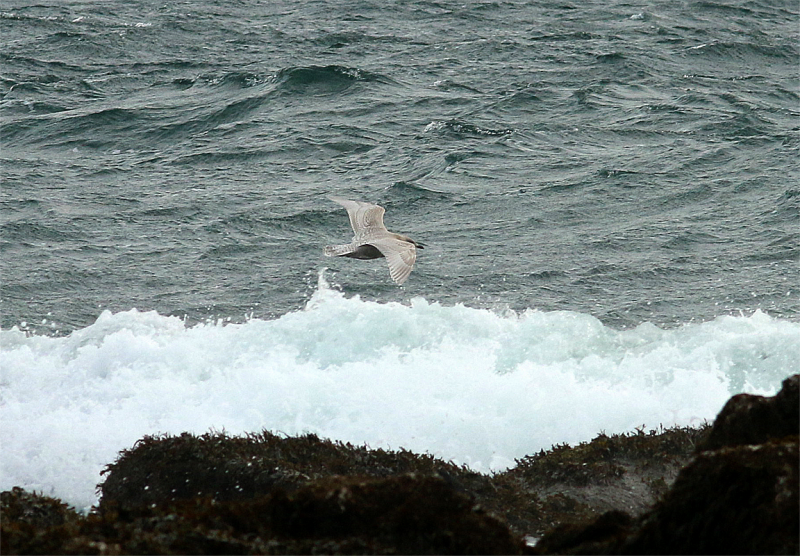
We’ve got a couple of snowy owls on the island again this winter, and a few of us have been enjoying the sight of one or both on a somewhat regular basis. Robin walks by it frequently on her way to work at the Post Office, and Joe Bray, who once owned a lobster boat called the Snow Owl, and Paul are always happy to see the visitor from Canada.
I haven’t seen a snowy in several years, even though we’ve had them here in recent years, so I was delighted to stand in the road for 15 or 20 minutes just staring back at one on the way to my “polar dip” on New Year’s Eve. I assumed this one to be a female because of the good deal of brown mixed with the classic white, but Jeff told me that trying to figure the sex of an owl based on coloration yields an accuracy about the same as a random guess.
The weather was fine on the 4th of January — the day of the CBC — as we walked to the south end of the island in search of the owl and anything else we might notice, Jeff making sounds we did not recognize in hopes of attracting the attention of — something. Not so many birds chose to show themselves. Our wonderful dooryard snowball bush, so often a riot of songbird activity, wasn’t particularly interesting that day. The scientist would have to take our beginner’s word for it. Such is bird watching (um, I mean birding).
We met up with Mike, who had taken off in another direction, and who reported that he’d seen a dovekie. Jeff looked just a little bummed that he’d missed seeing that. I didn’t know what a dovekie was, so after it was all over, I looked it up. Cute little fellow, I’d agree.
Standing on the rocks at the edge of the beach known as Southern Sands, Paul spotted a peregrine falcon on Ten Pound Island (actually, he said “There’s some kind of hawk over there,” so Jeff trained his Swarovski scope on it to make the identification). I also saw a black scoter, a fairly striking seabird new to my attention, not that I would have known what it was called without Jeff’s tutelage.
We looked at loons and various kinds of sea ducks and gulls; searched for purple sandpipers but think we saw starlings instead; wondered if we were hearing a cedar waxwing but never saw it, and told Jeff about the saw-whet owl down at the recycling shed. The snow owl hid from us that day, but Mike got a nice photo of one.
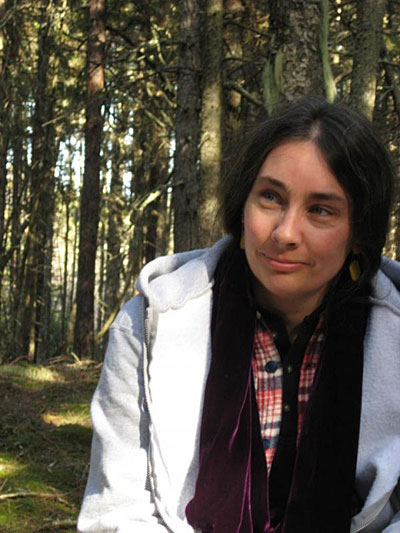
Was Pat’s mountain bluebird a possibility? Well, there is definitely a great black hawk hanging around this winter in Portland, a bird which belongs in Mexico. A few summers ago our passenger boat captain reported seeing a red-billed tropicbird, and it turns out that same bird has evidently been coming to our bay for a decade or so. There have been other outlier sightings; Jeff reported having seen a Townsend’s solitaire around here, a bird with no reason whatsoever to be on the eastern half of the continent. So yes—it was possible.
(also note this recent article in the Wiscasset Newspaper by Jeff and Allison Wells.
Eva Murray lives on Matinicus.
Event Date
Address
United States

